Leasing oil and gas properties: A lucrative investment opportunity
Leasing oil and gas properties is a compelling investment opportunity that has piqued the interest of savvy investors looking to diversify their portfolios and tap into the wealth-generating potential of the energy industry. This comprehensive guide explores the intricacies of leasing oil and gas properties, delving into how it works, the benefits, associated risks, types of leases, strategies for success, and the broader implications of this lucrative investment avenue. In a world constantly seeking energy resources, this investment option holds the promise of significant returns and long-term stability.
What is Oil and Gas Property Leasing?
Leasing oil and gas properties involves the contractual agreement between landowners (lessors) and energy companies (lessees) to explore, drill, and extract oil and gas resources from a specific tract of land. In exchange for granting access to their land and resources, landowners receive lease payments and royalties based on the production or sale of these resources.
How Oil and Gas Property Leasing Works
When a landowner leases their property for oil and gas exploration, the lessee typically conducts geological surveys and exploration activities to determine the potential reserves. If the results are promising, the lessee proceeds to drill and extract the resources. The landowner receives lease payments, and if oil and gas are produced, they also receive royalty payments based on the production volume.
Lease terms can vary widely and typically span several years. During this time, lessees have the right to access the property, and they bear the financial responsibility for drilling and operational costs. Landowners, on the other hand, benefit from a steady stream of income without directly participating in the exploration process.
The Advantages of Investing in Oil and Gas Leases
Leasing oil and gas properties offers numerous advantages, making it an attractive investment option:
- Passive Income: Investors receive lease payments and royalties without being involved in the daily operations of the drilling and extraction processes.
- Portfolio Diversification: Oil and gas leases provide diversification in an investment portfolio, helping to reduce risk by having assets in different industries.
- Inflation Hedge: Lease payments and royalties often increase with rising energy prices, serving as an effective hedge against inflation.
- Potential for High Returns: Successful oil and gas leases can yield substantial returns, especially in areas with abundant reserves.
Risks and Considerations
Before venturing into oil and gas property leasing, investors should be aware of the following risks and considerations:
- Market Volatility: Oil and gas prices are prone to significant fluctuations, which can affect the value of lease payments and royalties.
- Environmental and Regulatory Risks: Energy companies must comply with environmental regulations, and changes in laws can impact the viability of a lease.
- Resource Uncertainty: Drilling can yield unsuccessful results, leading to dry wells and lower returns.
- Geopolitical Factors: Global events, like supply disruptions or political instability in oil-producing regions, can impact the industry and investment.
Types of Oil and Gas Leases
Various types of oil and gas leases exist, including:
- Mineral Leases: Cover the rights to extract specific minerals (oil, gas, coal, etc.) from the property.
- Non-Participating Royalty Interest (NPRI) Leases: Grant the right to a share of production, but not involvement in exploration and drilling.
- Working Interest Leases: Involve active participation in exploration and drilling processes, with a share in both costs and profits.
- Overriding Royalty Interest (ORI) Leases: Offer a share of production revenues, typically without responsibility for operational costs.
The choice of lease type depends on an investor’s level of involvement and risk tolerance.
Investment Strategies for Oil and Gas Property Leasing
To maximize the potential of oil and gas property leasing investments, consider these strategies:
- Due Diligence: Thoroughly research the energy company, the property, and the geological potential of the lease area before investing.
- Diversification: Spread investments across various leases to minimize risk associated with a single property.
- Risk Management: Stay informed about market conditions, industry trends, and regulations to make informed investment decisions.
- Legal and Financial Advisors: Consult with experts in the field to ensure you understand the lease terms and have a solid investment strategy.
Tax Implications
Oil and gas lease income is typically subject to taxation. Consult a tax advisor to understand the tax implications in your jurisdiction and develop a tax-efficient strategy for your investments.
Real-World Success Stories
Several investors have achieved significant success in oil and gas property leasing. Notable examples include:
- Permian Basin: Investors in this prolific oil-producing region have witnessed substantial returns through productive leases.
- Marcellus Shale: Landowners in this gas-rich area have enjoyed lucrative royalties from successful drilling operations.
How to Get Started with Oil and Gas Property Leasing
If you’re interested in pursuing oil and gas property leasing, follow these steps:
- Education: Learn about the energy industry, lease types, and the exploration and drilling process.
- Research: Identify reputable energy companies and potential lease opportunities in regions with known resources.
- Consult Professionals: Seek advice from financial advisors, lawyers, and industry experts to guide your investment decisions.
- Negotiate Leases: Engage in negotiations with lessees to secure favorable terms and agreements.
Leasing oil and gas properties presents an enticing investment opportunity with the potential for substantial returns and passive income. However, it is not without risks, and investors should approach it with diligence and careful consideration. A well-researched investment strategy, diversification, and the guidance of experts can help unlock the wealth-generating potential of this lucrative investment avenue. In a world with a growing energy demand, oil and gas property leasing stands as a valuable and promising addition to a diversified investment portfolio.
If you have further questions related to the Leasing oil and gas properties topic, feel free to reach out to us here.


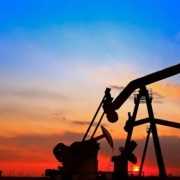
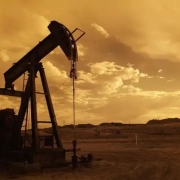

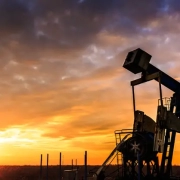
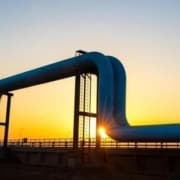
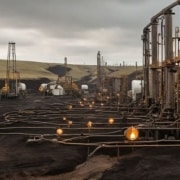
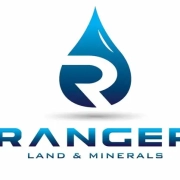



Leave a Reply
Want to join the discussion?Feel free to contribute!